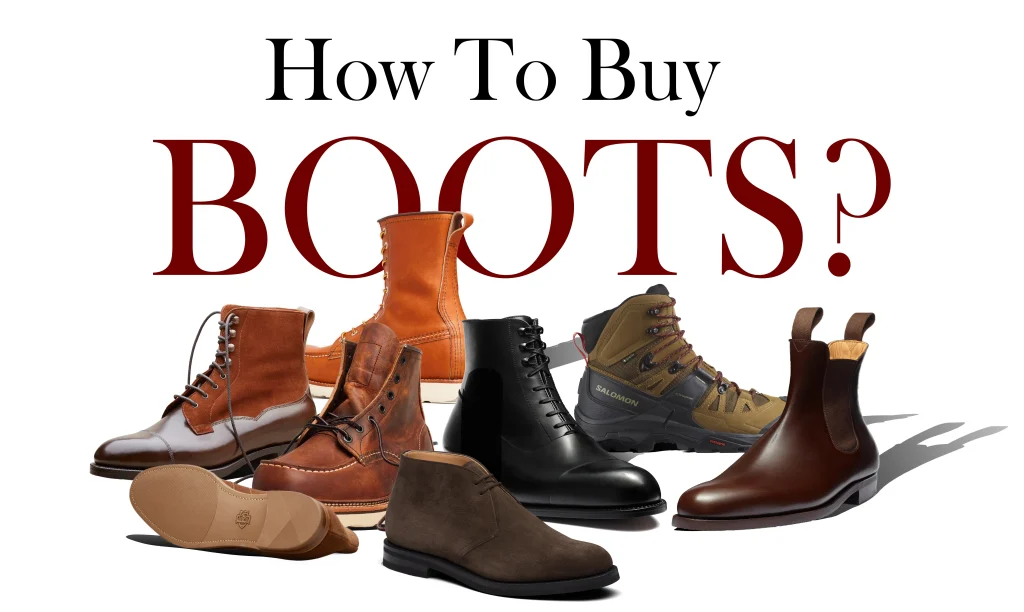The poshness might keep many from putting their incredible usability to the test.
July 12, 2025

When I worked as a broker at a marble house in Makrana, someone sold me the concept of classic boots just as I wrapped up a big sale and had a substantial commission in hand.
That also marks the beginning of my exposure to sartorially well-put-together personalities. So that all prepared me, and eventually, I ended up splurging on a pair of boots from Bridlen.
A ₹17.5K Field boot in brown Hatch Grain leather, bought about five years ago. Even if they’ve never been worn intensely, they’ve had enough wear to understand the boot and assess its value.
Since I began to cover boots and shoes for a living, I have got (not bought) three more pairs of boots from Bridlen—a Balmoral in Black box calf, a U-tip mid-top derby boot, and a Chelsea in box calf.
But they—the three ones—lack the fear of making an expensive mistake. They lack the emotional holdings that provoke rationalizing such high-end purchases from meaningful angles.
I didn’t feel anxious while picking the size of those three (free) pairs, and neither qualifies to confirm whether they overperformed their prices. I’m telling these as I understand my responsibilities towards the readers of this blog.
With no intention of convincing you to buy Bridlen boots, this reading encapsulates what I’ve learned about the four pairs of Bridlen boots. My target readers are anyone for whom ₹29k is a lot of money for a pair of boots.
How can you confirm the size will fit correctly?
Communicate the length and width. They’d hopefully
locate that magic number for you.
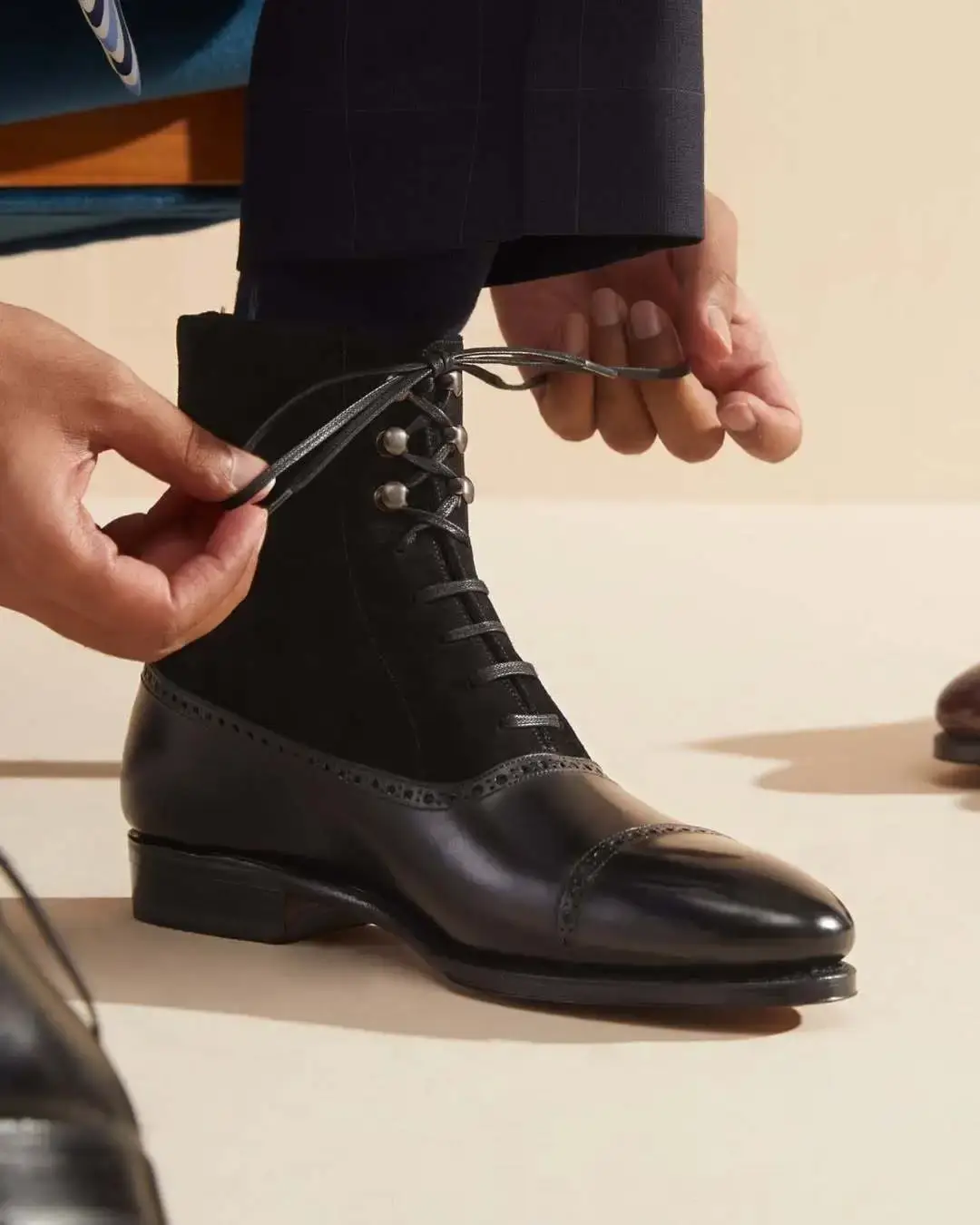
Bridlen, in my opinion, is a niche brand operating in very sliver demographics. The upside of that is the attention and assistance a buyer receives. Customer service is exceptional enough that I, for one, have never experienced such elsewhere, even for more expensive purchases.
I’d recommend making the most out of such an amenity. Instead of bothering with the size chart, I communicated the desired model, length, and width to them. I’m quite convinced by the fit produced with their suggested size. More on that later.
They know the last dimensions, the profile of the desired model, and how that specific leather behaves as it ages—thus, they hold the best standing to translate those inputs into a fitting number.
Such initial discussion might add a week more to this lengthy equation; be mindful of a six-week waiting period as Bridlen offers boots through a made-to-order framework. It is not a quick purchase. You’re stepping outside the mathematical rigour of fitting a mass-produced.
You might positively enjoy this process as it instills a sense of security. It shows that the maker values your money and is doing more, apart from crafting a quality boot, to justify the ₹29k splurge.
Such discussions are essential because, at this level, a brand has to ❝fit the mind as well as the foot,❞ as people vary in how they like boots to fit. Bridlen has people who are fervent about your query and want you to be happy enough to return.
Along with the length and width, you can share the area where you want it snug or spacious. Just speak out even a very unlikely to craft kind of demand, as it is okay to appear foolish in front of a few people rather than having an ill-fitting boot.
After all that, if you’re still not pleased with the fit of your newly arrived boots (first, I’d recommend this reading to learn my hard (boot buying) lessons the easy way), Bridlen accepts size exchanges within five days.
About The Boots.
How do they make them? In what materials? Details & Nuances?
Bridlen has decades of history and established relationships. Both are mutually crucial ingredients to craft boots for which one could feel convinced to pay ₹29k. The latter facilitates procuring top materials, and the former trains how to develop them into a beautifully functional boot.
They talk on Instagram, on their own website, or in trunk shows, about the methods they use and the leathers they sought. No matter how much you value customer service, in my experience, knowledge is what really engages a man.
Tell him how his boots are better made than others. The product is, ultimately, going to justify the price. I have four pairs of boots from Bridlen. Below, I’ve mentioned the things that contribute to their value.
The leather
Excellent Quality. To such a degree that
some are too posh to be a true workhorse.
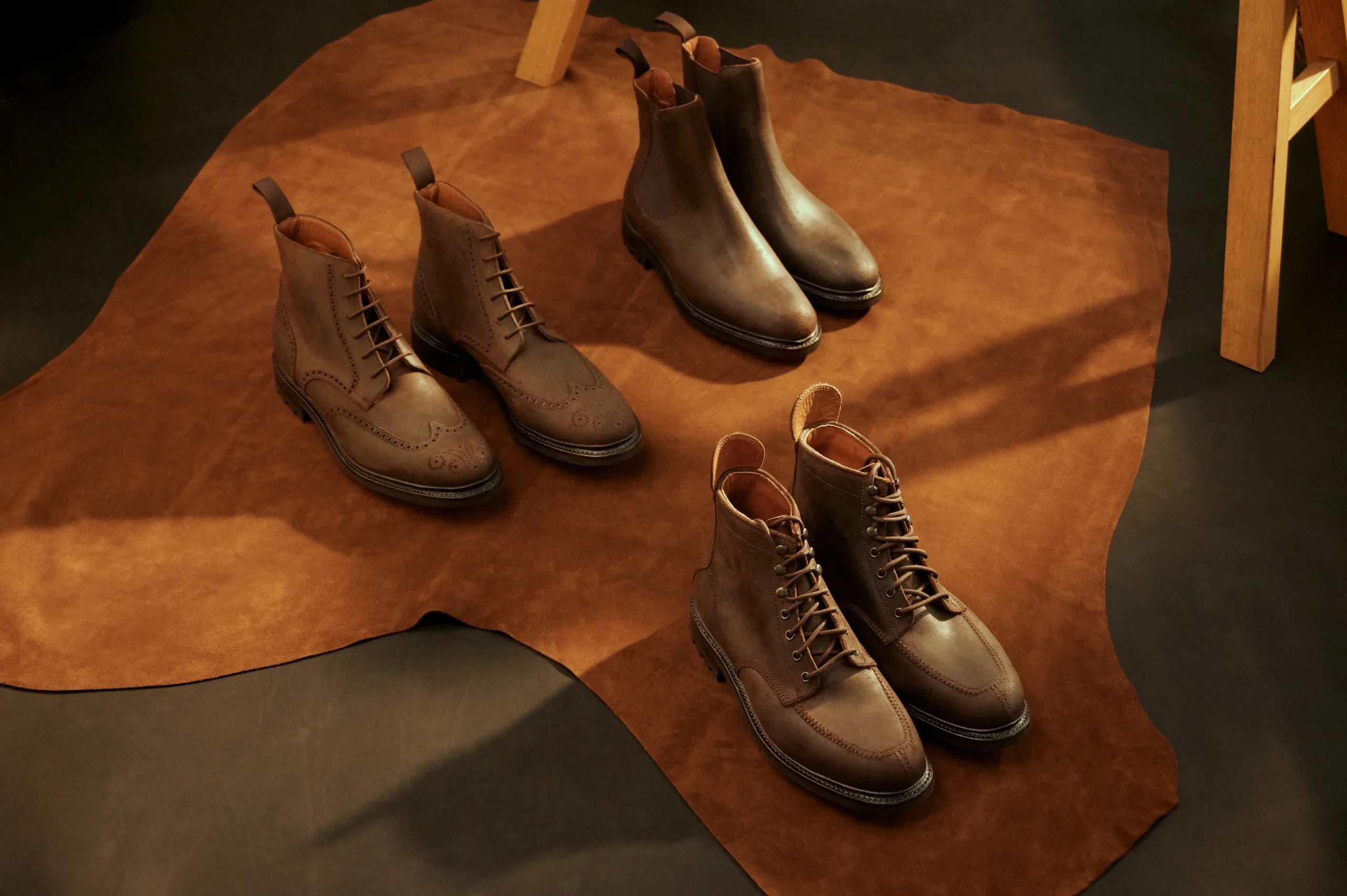
My time at Marable Companies has taught me to articulate boots as a reliable force that values ❝substance over style.❞ But my first dress boot blunder rewrites that metaphor, from which I learned just how broad a concept it is.
The material generally represents what the boot is up to and how it should be used. Bridlen uses exceptional Quality leather for their boot, but Quality here does not mean what is long assumed—Leather quality hypotheses pulled from the chunky work boot lexicon.
They use leathers suitable for sleek, smart, and sharp dress boots. I am not saying they are delicate. In fact, they won’t fall apart for decades if looked after appropriately.
The Hatch Grain, for instance, has taken a huge number of scratches and scrapes over the five years of wear, yet they’ve worn in beautifully, through occasional cream.
It is textured calf leather. The pattern is embossed with a roller after correcting the tough top layer. Because of such sanding, this grain does not take as much wear and tear as others do.
The other three boots are in Annonay Vegano Box Calf. Annonay is a French tannery renowned for this particular type of leather. I avoid getting too animated by such celebrated names as every tannery grades their produce from worst to best.
When Calf skin (skin of young cattle) is dyed with a transparent dye (Aniline dye) it’s called Box Calf. The ❝Vegano❞ is a Box calf left without any topcoat or finishings.
The colorant penetrates the entire thickness of the skin, thus even without a topcoat, it looks very natural. The downside is that this treatment magnifies the flows and blemishes on the skin as well. However, this is not a concern with the leather we have here.
From the huge quantities they maintain to keep up with their upper-making undertakings for other brands, they select the best hide for boots and shoes belonging to their beloved label—Bridlen.
This business structure gives Bridlen an edge over parallel makers from all over the world. Coming to the boots. Even the oldest of ’em all—The Balmoral—is just 16 months old.
Honestly, I don’t have many occasions to pull out a dress boot. Still, I wore them a fair bit often against a sharp Oxford without being seen as the antithesis to the formal assemblies.
It maintains its shape. Although it has just been a few months of careful wear, I don’t think sagging would be an issue here. Appearance-wise, the calf is consistent and smoother than any other calf I’ve tried—but it’s a bugger to wear them as boot.
Further validating my reservations on how material shapes the use-case of the boot, the smooth calf adds a layer of sophistication and dressiness to an already formal class of boot.
The Lining
It used to be so simple to acknowledge the lining.
Now, Bridlen has put thought into it.
The quality and type of materials creating the interior of these boots indicate that Bridlen made them without regard to cost. All four boots are lined with drum-dyed Crust leather. The same quality Crust Leather that many makers use for uppers.
To my knowledge, this is the furthest any brand goes with selecting the lining material. Crust leather is tanned but not dyed or finished. As the hide is not stiffened by the pigments of the dyeing agent—Crust leather makes a comfortable and decent lining.
Sourced from a full-grain hide, it is durable too. Although it is easy to put on and take off, I do miss the friction of suede lining in the Chelsea. I’ve discussed further under the construction title, about having boots fully lined or partially lined.
The Sole
Materials live up to the reputation of the style.
My Five-year-old Field Boot’s Dainite sole,
for instance, is still going strong.
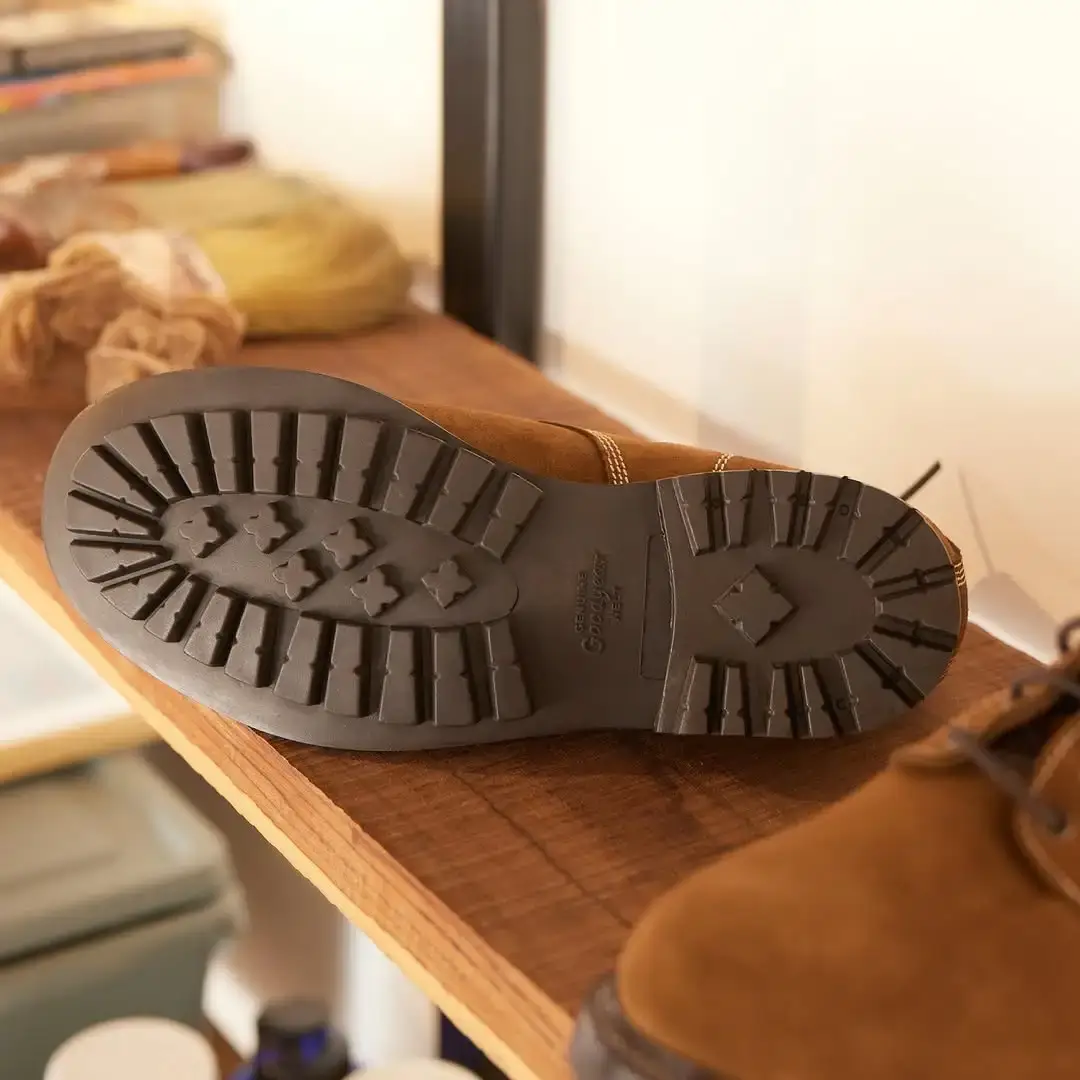
Procured from the best possible sources in the world; the outsole materials are capable of eking out as many miles as possible for their particular use case.
The casual profile of the Hatch grain field boot is backed with a Dainite Lugged Rubber Sole. Dainite is a famous range of rubber soles produced by the Harboro Rubber Company in the UK since the early 1900s.
I’ve been using them for a while alongside a pair of boots with similar cleated rubber soles from Vibram. Unlike Vibram, the cleats of the Dainite sole do not extend to the edges.
The upside to such nuance is that it conceals the link between what races on wet streets and taking you to work. Dainite sole is slightly thinner, softer (meaning a bit better cushioning), and more flexible than Vibram sole.
Both offer incredible resistance to wear with a heightened level of grip. The cleats have certainly worn out strongly on the heel and middle, but much of the rest is still going strong. It is 90% natural rubber.
A parallel synthetic material—Nitrile rubber—makes the Tanker boots’ outsole. The studded pattern and sleek aesthetics make them a perfect crossover between full leather soles and chunky commando soles.
I didn’t get a valid chance to see how they handle warmer conditions as they are often praised for their heat-resisting abilities. The Tanker boot didn’t have enough wear to tell how well it performs over a longer haul. But I do admit that even without the aggressive lugs this Nitrile compound grips very well.
Respecting the versatility of the Chelsea style, Bridlen delegates the charge of picking between leather or rubber soles to the buyer. I’ve picked the Nitrile rubber sole, given all its performance virtues I’ve encountered with the Tanker boots.
However, the 16-month-old Balmoral boots are planted on traditional slow-bark tanned leather outsoles. Unlike chrome or other synthetic tanning agents, natural tannins (from chestnut or mimosa tree) naturally bind to the collagen proteins in a hide turning it into leather that is significantly more durable.
The difference that such rather slow tanning approach produces isn’t immediately apparent. What I feel as soon as I put these on (any of the four pairs of boots) is the insole made of similar slow bark-tanned leather.
It initially serves as a comfortable, smooth padding for your foot to rest upon. But with wear, it takes the impressions and develops like a custom footbed contrasting the hard outsole; More on its ❝construction relevance❞ in a bit.
The Construction
Bridlen applies the purest form of traditional methods
to develop stunning robust boots.

A lot of work and time is bestowed to create subtle upgrades—aesthetic and functional—one would likely notice after perhaps years of wear. This might sound like the least ambitious path, the most demanding one. Thus, requires a strong set of beliefs.
Many big names have the budget to procure those lavish materials, but, because it’s a bugger to treat them with a worthy make, such distinctive construction seems feasible at smaller passion-driven heart-over-head business operations.
Few are claiming a similar make. But the way most of them (if not, all of them) do it is a bit lazy and cost-centric. Bridlen do not let time grow old like it should. They do the construction the old way in many regards.
Price creates a barrier. Otherwise, there is no way to produce any kind of volume while pursuing such traditional bootmaking principles. Their Founders Line epitomizes what happens when lost in shoemaking nuances so subtle they go well beyond the normal needs. Fortunately, many of their bootmaking advances lead to functional edges.
The Upper
A lot has been thoughtfully executed
to ensure a lasting shape, breathability, and synergy.
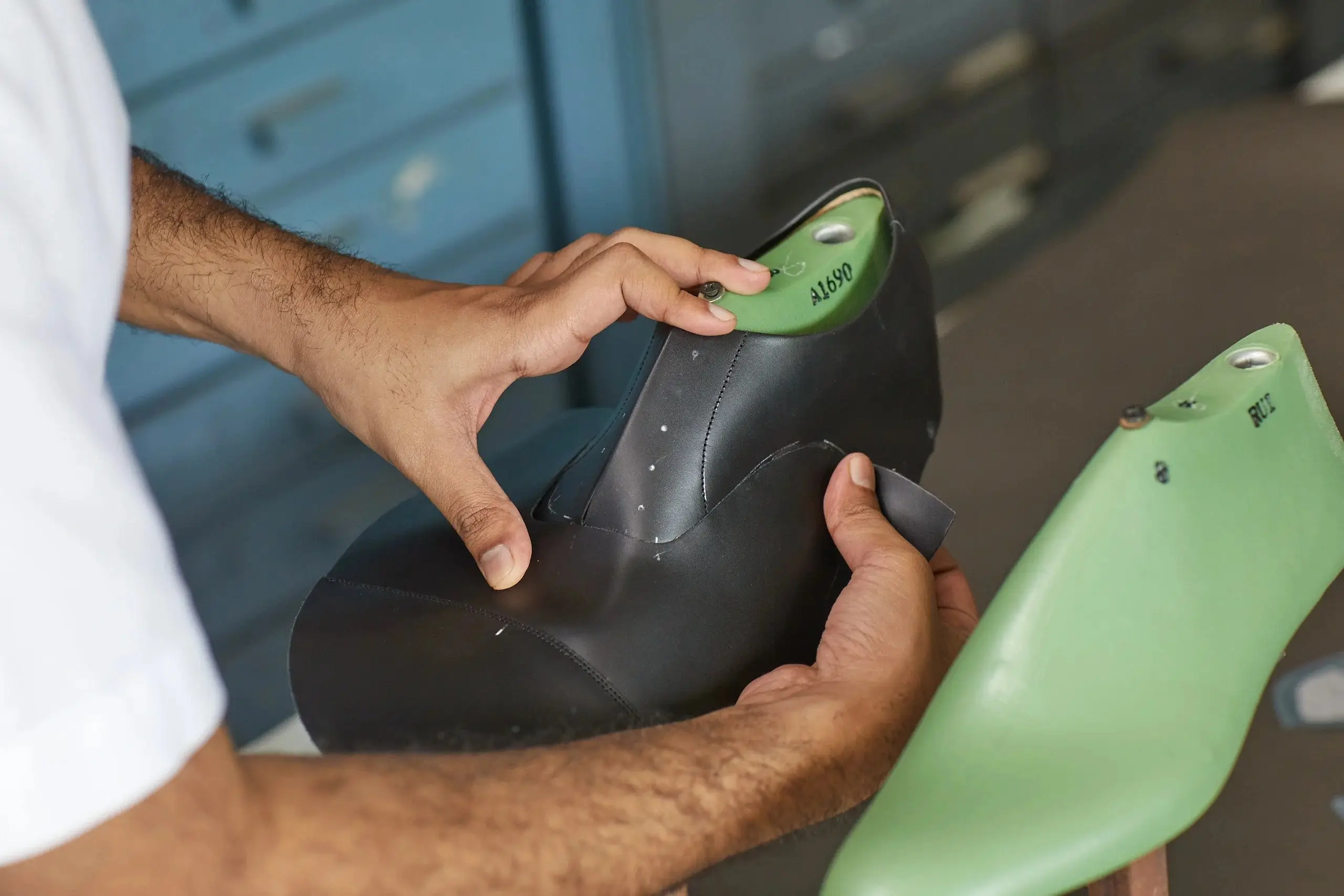
This is Bridlen’s strength—this upper-making business. During the initial years, they were committed Upper Makers serving clients overseas. These boots have many aesthetic and functional subtleties reflecting on their years of experience.
For instance, the dimensions and positioning of pattern pieces are set to portray a very conventional and serene look. It can not be replicated but can only be learned after trying many possibilities and combinations.
The difference comes to life when the pair is set alongside others. This Field Boot and BLKBRD’s Fulbert are the closest I can manage to get a picture of.
The overlays meld almost like a single piece. On paper, such nuances read too subtle to be taken seriously. But my past experiences taught me how disheartening a stack of thick layers could be, even more so at such a price point.
The same can be said for the stitch density, which is subject to the quality of leather. The box calf and hatch grain are sewn at an impressive rate of eight stitches per inch. It contributes to the overall neat look of the boots.
However, the most talked-about practice is the way they develop a three-dimensional shape from a sheet of leather and the measures adopted to sustain that shape.
Bridlen pre-shapes the uppers on the last before stitching them, places leather backing between the lining and upper to hold the shape, and hand last the uppers to emboss even the modest arcs of the last into the boot.
Such refinements are typical of high-end bespoke shoemakers. The industry norm is to use a rather static fabric backing to quickly and economically achieve near-similar results. The downside is a perhaps rigid upper that does not attain the foot shape with wear.
Despite hand-lasting, the boots have a decent last definition but are far better than boots from other makers. They curve in many places, not just the instep and the arch. Keeping in mind the boot’s functional DNA, it’s unfair to benchmark these boots against Bridlen’s dress shoes.
The Bottom Making
The shift to how Goodyear-welting used to be
isn’t meant for good or bad, but for good or great..
Producers love to say that their boots are durable, as if they happen to be durable by themselves magically. Marketers figured out that transparency on bottom-making—how the soles are attached and how they hold the uppers—renders authenticity to their claims and Goodyear-welting turns out to be the most effective in doing so.
Welting, indeed, makes robust and re-soleable bottoms. Thus, picking Goodyear-welt as a marketing phrase is understandable. But there is no Board or Commission that defines what constitutes an authentic Goodyear-welt construction.
As a result, amendments and smart sacrifices are adopted to Welt faster and more economically. There is no room for doubt, as each of them showcases clear stitching along the edges, and the construction packs some pretty complex elements within a compact area.
Because everything is imperceptible to the naked eye, chiseled models are presented in the trunk shows and reviews. The bottoms of all four boots (in fact, every pair of Bridlen) are Goodyear-welted authentically.
The prevailing standard is to stitch the welt and upper through a linen rib glued to the insole—often made of slim inferior quality leather. This rib creates deeper voids which are filled with materials that vary between brands.
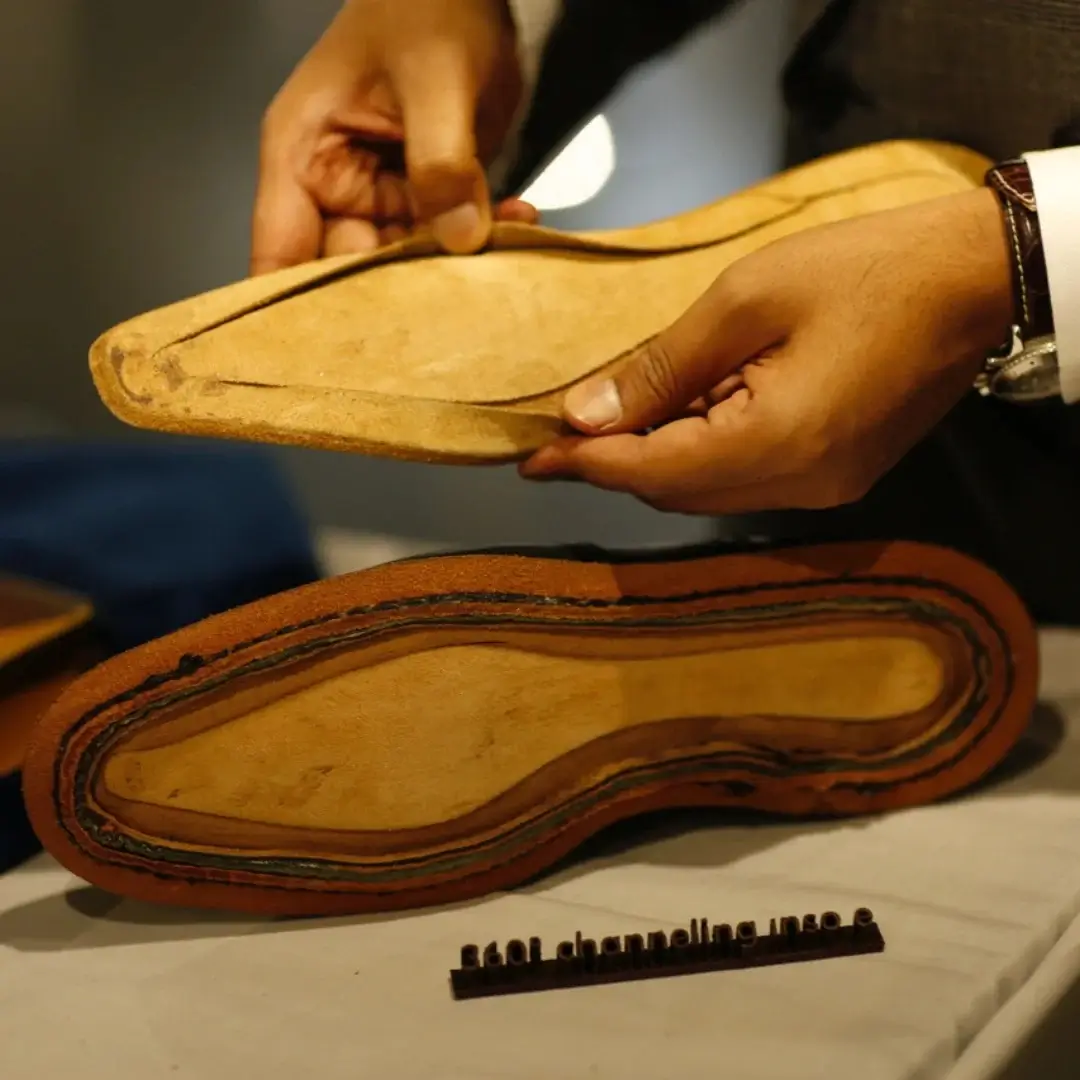
Deviations start by using a thicker and better-quality leather insole (details covered in the material section). Thicker insole because a channel has to be carved on the insole edge to hand-stitch the welt through the upper.
As the welt sits flatter on the boot, the channeled insole method leaves a smaller cavity to fill with cork (Bridlen uses natural cork to fill such cavities). An entirely separate stitch is used to attach the outsole.
This final stitching is concealed in the Balmoral boot by running it beneath a thin flap, which is glued down to ❝close the channel.❞
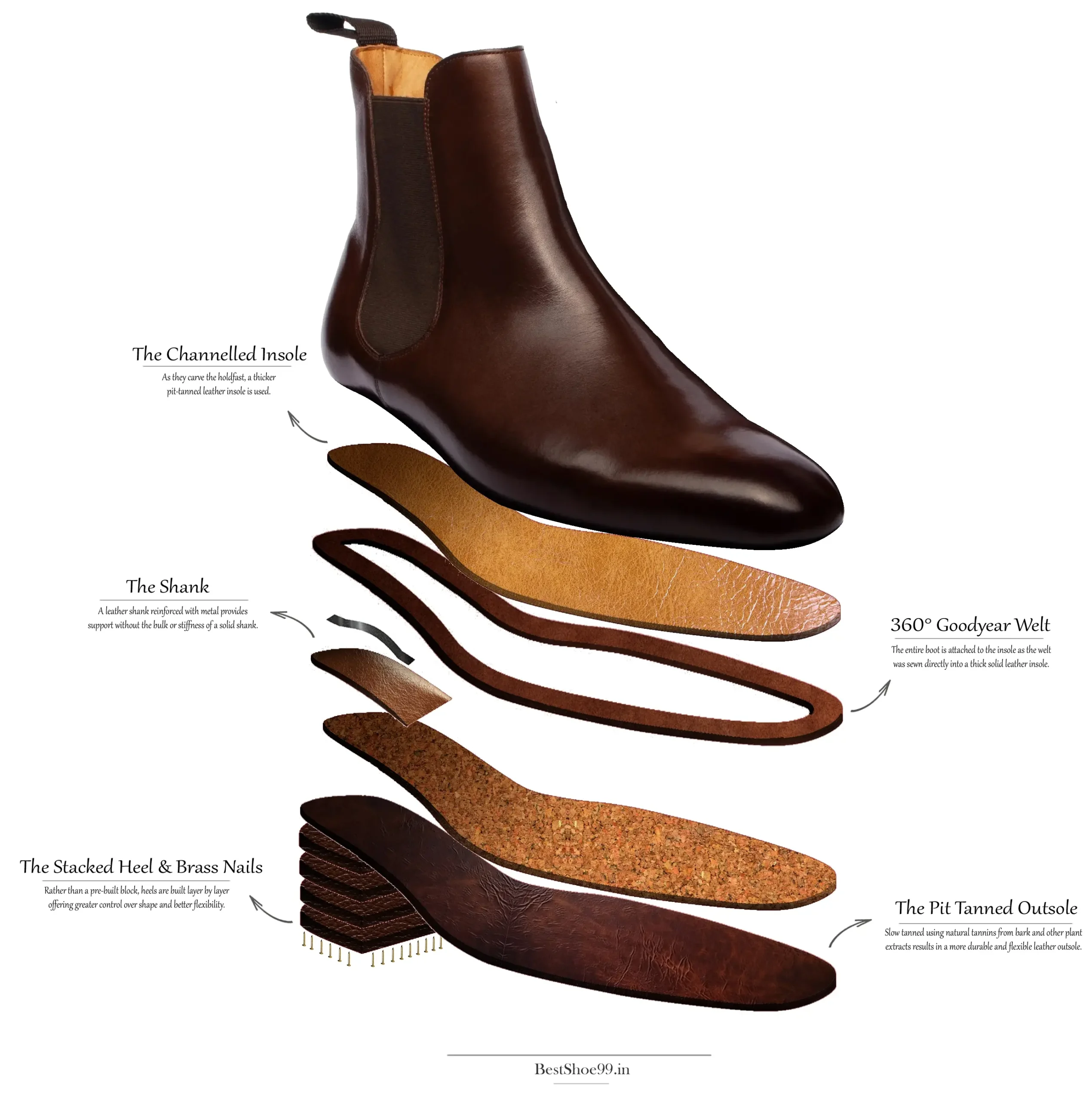
The appeal of 360° Goodyear-welting—stitching encircling the entire perimeter of the boot—flashes as robustness is more important here than clean and neat heels. But doesn’t look too odd as the edges are trimmed closer to the uppers—a job not for faint-hearted artisans.
None of the four boots is treated with a waist that disappears under the foot. A square waist, for a boot, is considered better for the overall balance and support.
Instead of using pre-made blocks, the heels of these boots are made layer by layer with brass nails (brass because it wears at the same pace as leather).
Layered heels are generally praised for their added durability, but I found that the better control over the shape is why makers look past the convenience of pre-made blocks and take the plunge of building one in layers.
The slight softness and flexibility can be felt, especially by those who mostly wear boots with block heels.
Did the boots come out better when done the way Bridlen did it, following the old rules?
Yes, the original Goodyear-welting system leads to boots that evolve better. It is easier for a person with a developed sartorial palate to identify and value its many complex and subtle nuances right off the box.
For those with little to no experience with proper boots, most of these differences grow noticeable with wear. Then comes a few that can not be identified in isolation by either a connoisseur or an amateur.
Most people didn’t carry a boot rotation large enough to make such side-by-side comparisons. The better breathability of Bridlen’s boots is one such distinction. They use very little adhesive to secure the layers making the upper.
They don’t use fabric backers on their upper—these consist of a canvas with a sticky glue on it. Thus, there is nothing between the layers to limit the breathability or moisture absorption.
Another elusive perk is the grounded feel or responsiveness of these boots. The bottom construction is executed very compactly that despite having thick soles the foot sits a little lower to the ground.
To value such differences, it is better to respect the attested reasons rather than finding the context to test them against. One of the apparent benefits is from the channeled insole Goodyear-welting.
The main argument against gemming is either the rib breaks or the glue will come loose after three to four resoles, leaving the boot un-resoleable.
These subtleties will not turn into benefits unless the buyer is in for the long haul. Unfortunately, modern society is not set up for that kind of relationship with their shoes or boots.
How do they stack up against the rivals? If any.
They are Best-in-class. However, there is a talented bunch one layer down.
The difficult thing with any sartorial piece’s quality is often deciding how far you want to go. Beyond a point lies diminishing returns. Bridlen boot collection is somewhat in that zone where even a little upgrade costs: better materials are rarer and specialist labour is more expensive.
That and the Bridlen price surge. In the last two years, the label’s every collection has seen a price rise, and nowhere more than in their boot batch. I bought my Field boot five years ago for ₹17.5k and today all Bridlen boots are ₹29k (both including shipping).
Within the national boundaries, Bridlen seems deserted. Craft & Glory, Pelle Santino, Kozasko, and The Royale Peacock are all offering welted boots for under half the price of Bridlen, but come with a lot less: both in terms of make and material. BLKBRD offers parallel make but doesn’t have the same cachet in leather.
I’ve steadily accumulated a good range from these makers and the brief read below would tell you what they offer. However, these are not substitutes, either to Bridlen or to the other mentioned makers. The idea was to enable you to match your budget and map out the level of quality you can jump between.
BLKBRD
A wider array of shippable boots no less intricate than Bridlen’s.
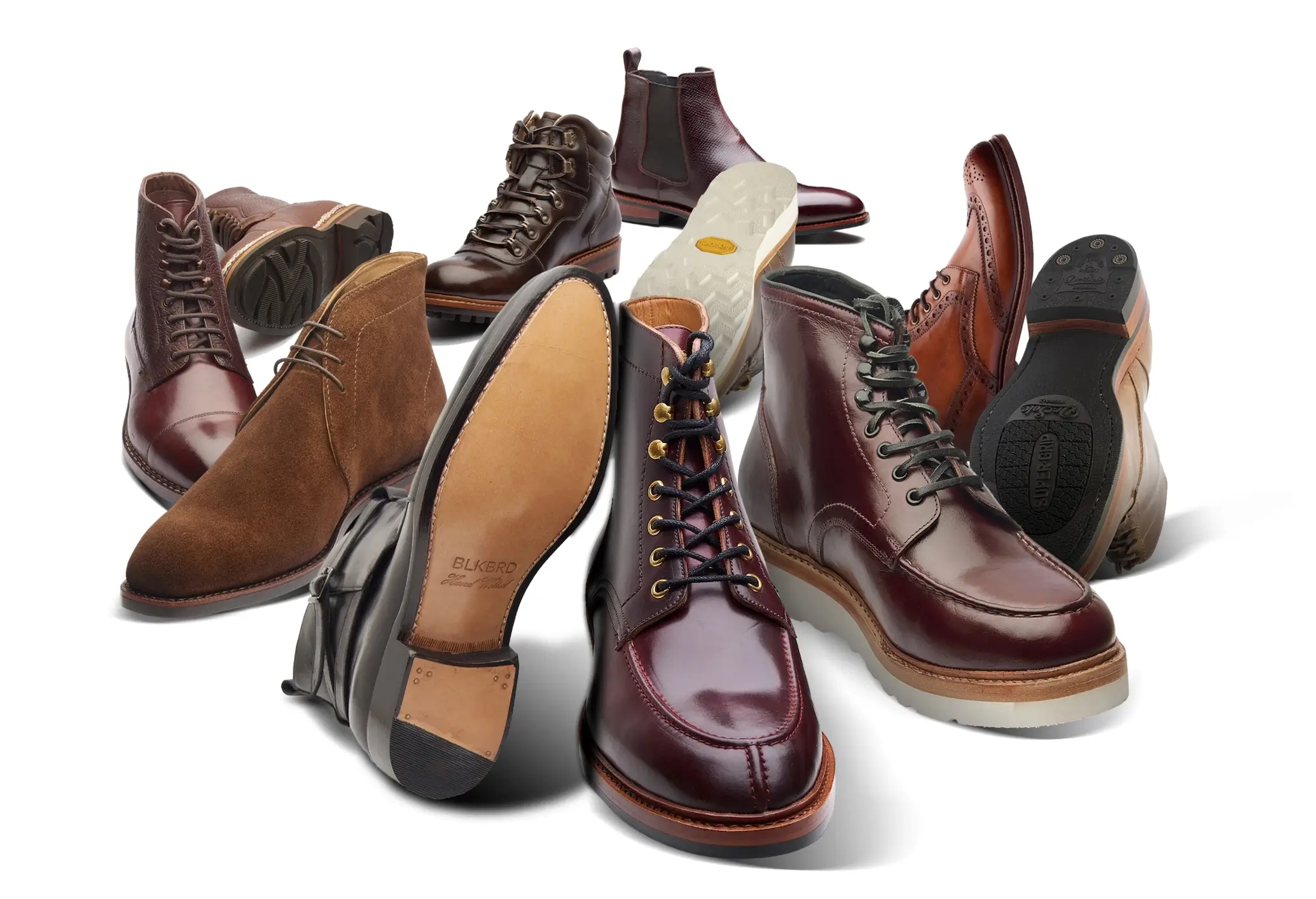
I have bought two pairs of boots from BLKBRD in the span of the last 19 months and perhaps be quickest to recommend for their usability.
The BLKBRD’s boot offering is the most extensive of any Indian bootmaker: covering everything between stitchdown to Norwegian, simple crust leather to shell cordovan from Horween, Trekking to Balmoral style, and starting from ₹13k to ₹63k.
Despite having many options, I was basically wearing BLKBRD’s Moctoe in Chromexcel on the majority of working days. At every opportunity. They have a parallel make as my other Bridlens, but aren’t too opulent that one hesitates to use.
At the margins, I’d say the Bridlen was a little better in terms of finesse, but it is a small difference. Maybe a bit more ignorable if you are not up for dress boots. I have covered the pros and cons of both the boots here.
Craft & Glory
Workable Goodyear-welted boots kept reasonable by
ruling out nuances many won’t need or even notice.

Boots welted with just the indispensable elements may not attract critics seeking nuances. But they are the ones that people might actually wear in situations. Craft & Glory operates on such principles.
The regional thick Buffalo leather—pure strength no opulance and one that sags after some wear—welted as per the prevailing standards and built around a very roomy and accommodating last.
For ₹12k, they offer boots that do not require a special palate to enjoy or unusual instincts to know what the boot has. For a long time, I wore C&G’s 6″ Ranger and Moc.
What they are so good at is keeping the balance and offering plenty of (legible) quality boots for the price (80 styles priced from ₹10k to ₹30k). And if you want a more targeted article on Craft & Glory boots, see here.
Kozasko
They have demonstrated how to align with the character
of boot regarding material, make, and shape.
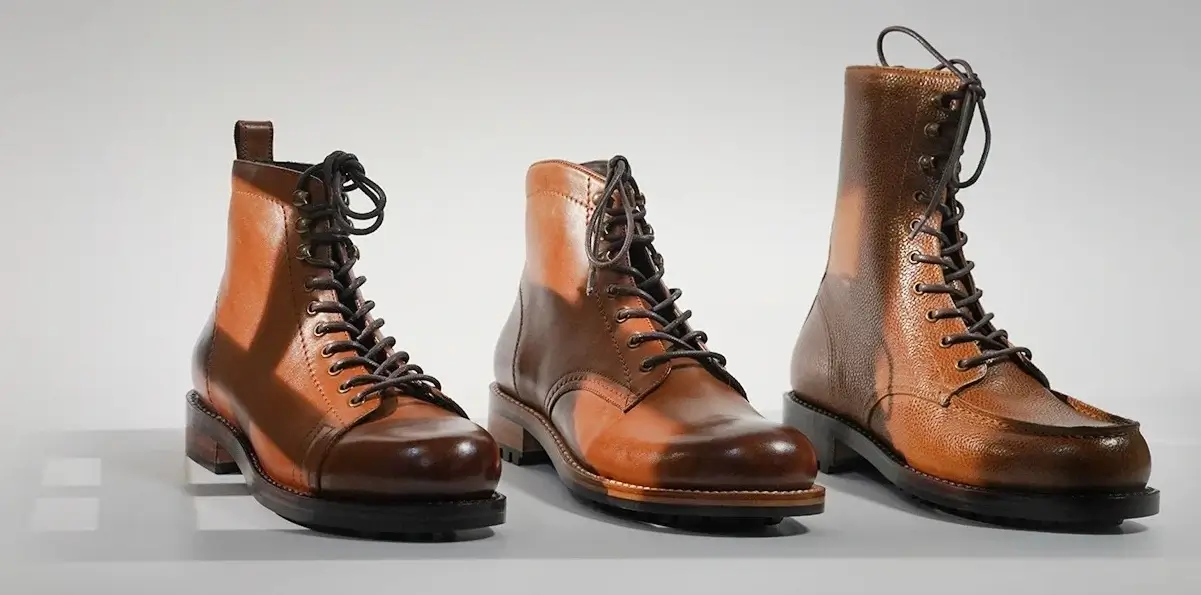
Kozasko, the Goodyear-welters from Agra, created a comprehensive line of boots that has grown despite little marketing or eye-catching designs. I typically avoid buying from makers trying to do so many things. But no other brand is crafting many different types of boots with such precision anymore.
It may not be the last word in sophistication, but there’s huge satisfaction in having a dress boot or work boot that is so clear about what it is for. Their dress boots, for instance, would feature a sleeker last, smoother leathers, compact construction, and their work boots are on a roomier toe box, rubber sole, and thicker leathers.
They are Goodyear-welting boots following the prevailing industrial standards. However, the thing Kozasko is most worth going for is price, from ₹12k to ₹27k. Better value for money.
What’s the verdict?
Dignified boots are assured to last, but still belong to the posh class.
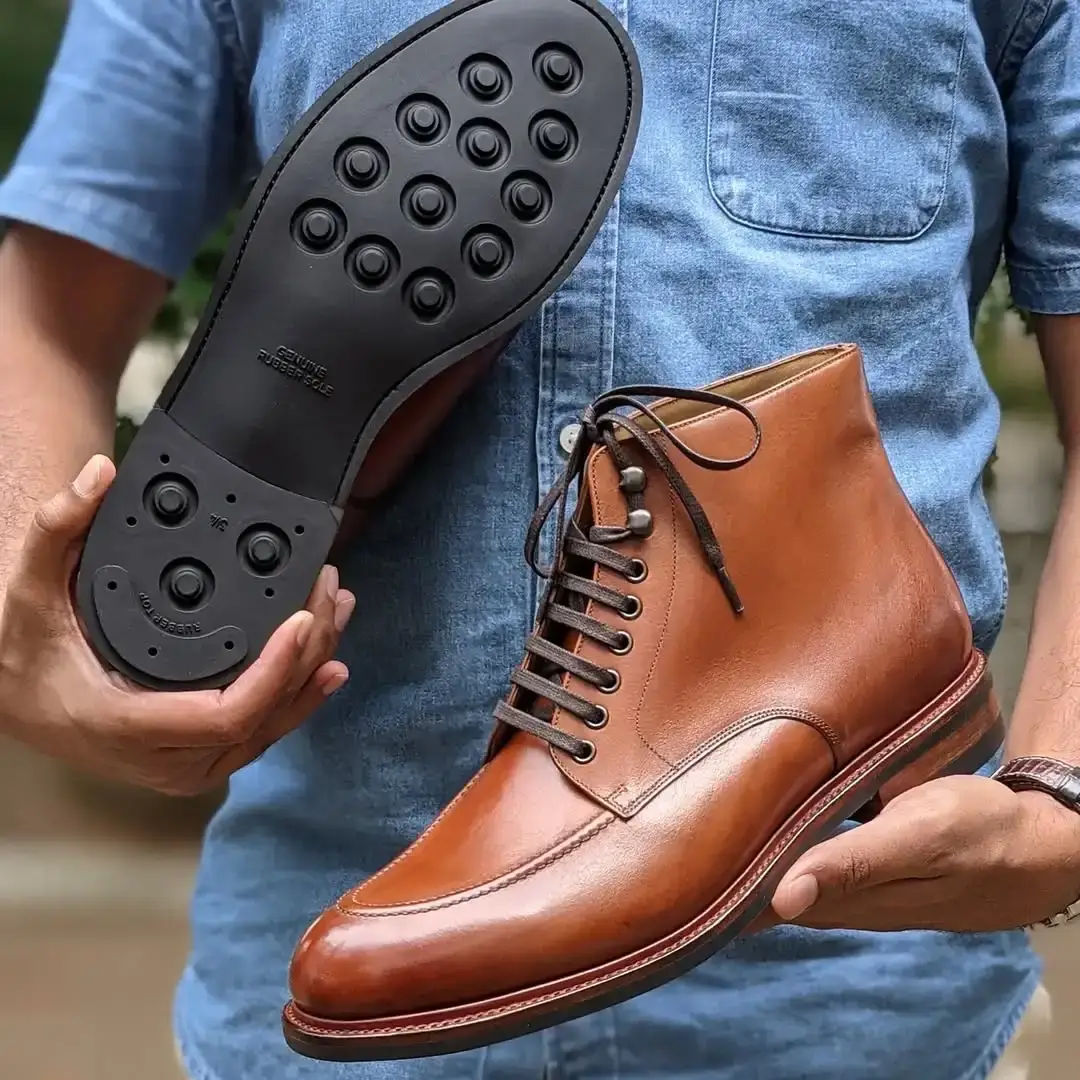
Few boots turn the act of crawling tight and rough spot into a more artful experience than boots from Bridlen. There’s a great classic charisma here and a pleasing refusal to ram this boots line full of what this label is capable of—Hello! Founders 25.
However, Bridlen has built its reputation around producing bespoke touches over factory-made shoes and it’s not about to throw that in the bin to make commercially successful boots.
Leather is characterful, the Make is far more capable, but a good portion of that massive ₹29k went into developing subtleties 99 percent of Indian boot wearers will ever discover.
Even their most workable models are too posh for use that most Indians deem appropriate for boots. These are the paragon of dress boots, ones that didn’t have much room in the Indian context.
Those who use sidewalks to reach places can’t afford such pairs of boots, and those who can—do not use sidewalks. These pairs might add up to the sartorial authority of someone who’s both well-dressed and unlikely to ever be seen working for a living.
You Might Also Like
How can we improve BestShoe99? Got feedback?
